Printable Version of Topic
Click here to view this topic in its original format
914World.com _ 914World Garage _ Car porn not 914 but related, hey it's all in the family
Posted by: Mikey914 Dec 21 2015, 10:57 AM
A customer of mine in is doing a 67 912 resto from tub up. The early 912s had the same issues with rust we do and even has foam in them too (just like our 914s).
He used a company in Ohio to dip the car and dissolve the crud (he did scrape off the tar) ans ecoat the entire car. He did the doors 1st to see if he would like the results, and wow! Looks like new metal.
Looks like Stoddard will be doing a full write up on this car at some point, but I was so impressed with the results that though I would share.
Attached thumbnail(s)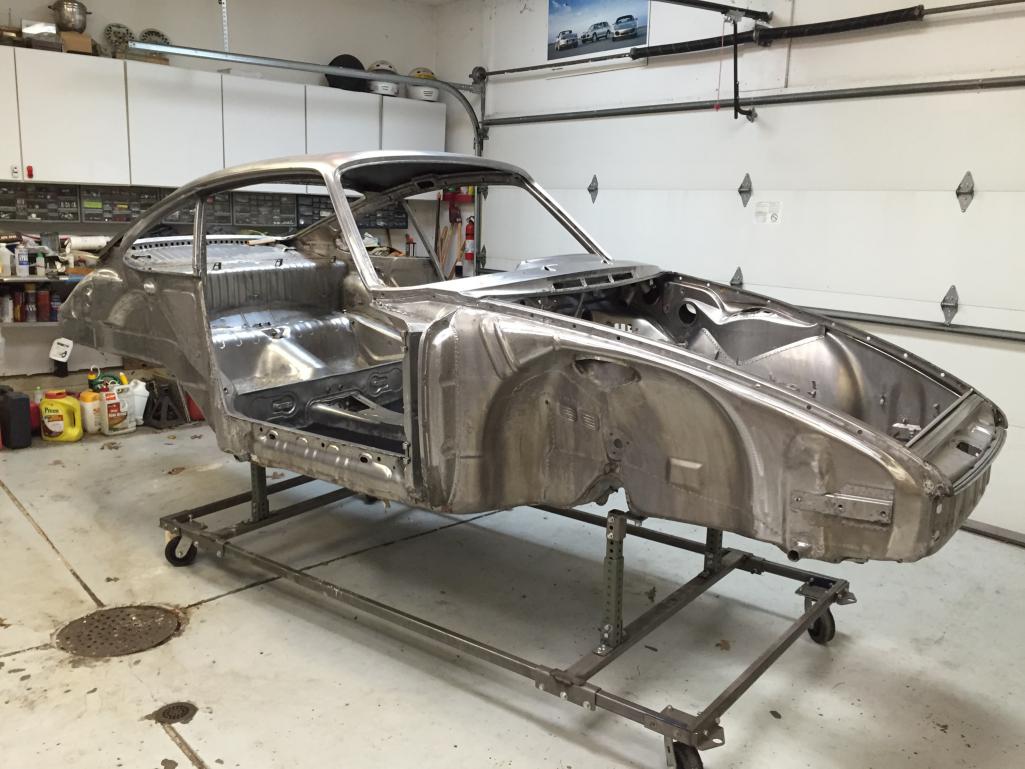
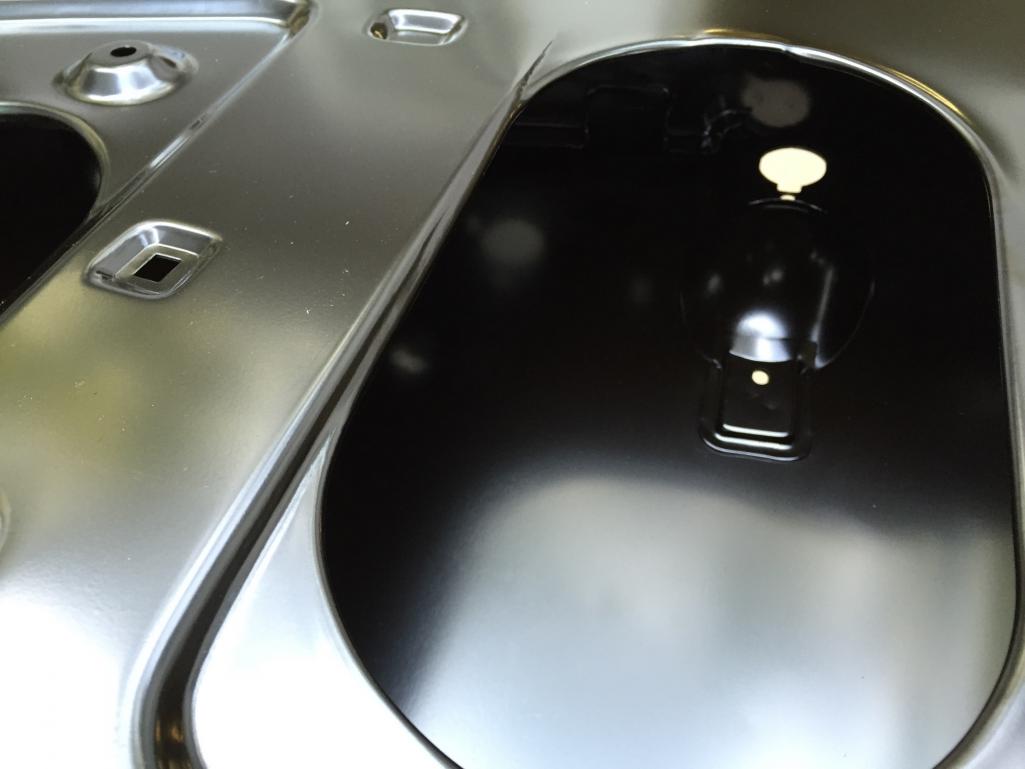
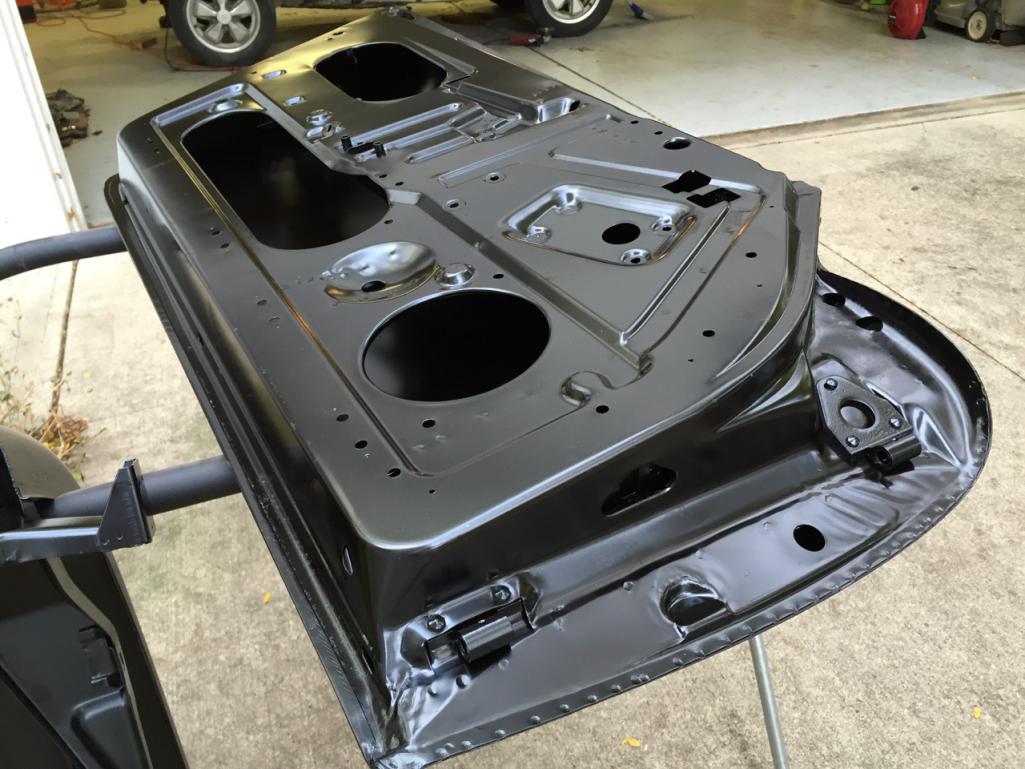
Posted by: gereed75 Dec 21 2015, 11:02 AM
wow looks great!! of course the next question is who does the process and how much??
Posted by: peteyd Dec 21 2015, 11:16 AM
Dipping cars is something we never recommend. I have heard too many stories of people painting their car and then 3-5 years later it starts to bubble.
The problem is the acid, or whatever they use to dissolve the paint and crud, gets in between the layers of sheet metal where they were spot welded. Then leaches out slowly and causes bubbling.
I also speak from experience. We had a bugeye sprite dipped and through out the restoration liquid was coming from the seems.
but that's just my 2 cents. Hopefully your buddy got a good company that rinsed it thoroughly.
Pete
Posted by: dflesburg Dec 21 2015, 11:23 AM
I disagree...
I had mine dipped in 1993 and have had no issues...
American Metal Cleaning in Cincinnati did it.
Posted by: Mikey914 Dec 21 2015, 11:40 AM
This was not only dipped, but e-coated. We have used e-coating in architectural projects in Hawaii with high humidity and salt air exposure and they've done well over the last 10 years, so I can't think of a better application.
My understanding is the "dipping" process" is using a sacrificial anode, and drawing the oxidized metal away, then putting a water soluble sealer on it, before e-coating. So not your traditional an acid dip.
Posted by: Cairo94507 Dec 21 2015, 12:03 PM
Looks terrific. I would love to watch that 912 novel along the restoration process.
Posted by: boxsterfan Dec 21 2015, 04:15 PM
Where can I get my 914 done like this? And how much?
Posted by: 914forme Dec 21 2015, 05:43 PM
E-coating done in Ohio, ![]() that is very tempting.
that is very tempting.
Posted by: mbseto Dec 21 2015, 06:33 PM
Wonder if we could get a quantity discount... group buy?
Posted by: Zimms Dec 21 2015, 07:25 PM
This was not only dipped, but e-coated. We have used e-coating in architectural projects in Hawaii with high humidity and salt air exposure and they've done well over the last 10 years, so I can't think of a better application.
My understanding is the "dipping" process" is using a sacrificial anode, and drawing the oxidized metal away, then putting a water soluble sealer on it, before e-coating. So not your traditional an acid dip.
Any chance of getting the name of the place?
Posted by: dlee6204 Dec 21 2015, 07:53 PM
We have an e-coat system at work for coating truck bodies before paint. The stuff is tough! One of these days I'd like to try and get my 914 in there to get done. I'm definitely going to get my replacement sheet metal coated before welding them on.
Posted by: Rob-O Dec 21 2015, 08:15 PM
If you did a 914, you would first want to cut the outer longs off your car (and of course properly support the car before doing that). The heater tubes inside will get destroyed by the dipping process, not to mention the e-coating process.
Posted by: BillC Dec 21 2015, 08:54 PM
Dipping cars is something we never recommend. I have heard too many stories of people painting their car and then 3-5 years later it starts to bubble.
The problem is the acid, or whatever they use to dissolve the paint and crud, gets in between the layers of sheet metal where they were spot welded. Then leaches out slowly and causes bubbling.
I also speak from experience. We had a bugeye sprite dipped and through out the restoration liquid was coming from the seems.
but that's just my 2 cents. Hopefully your buddy got a good company that rinsed it thoroughly.
Pete
Doing a traditional dip on a car requires two extra steps that they never tell you about:
- You need to take a torch (propane works fine) and heat all the seams until you boil all the moisture out of the joints. You'll know you're done when the joints stop sizzling -- don't need to get the metal any hotter than about 230-250 degrees, so no worries about warping the panels.
- You also need to strip all the lead off the body after dipping, since lead filler is porous and the chemicals will soak into the lead.
Otherwise, you'll have the exact problem you experienced -- chemical leaching out later and ruining the paint job.
Posted by: Mikey914 Dec 22 2015, 01:09 AM
I'll get the full information Monday. My contact is out til Monday. I dropped him a call and he was playing with this and sent me some pics.
I would love to see a 914 done up. the doors and lids were $500ish and the body was something like $3500ish. So not an inexpensive process, but as close to new as possible.
Posted by: bulitt Dec 22 2015, 03:19 AM
Dipping cars is something we never recommend. I have heard too many stories of people painting their car and then 3-5 years later it starts to bubble.
The problem is the acid, or whatever they use to dissolve the paint and crud, gets in between the layers of sheet metal where they were spot welded. Then leaches out slowly and causes bubbling.
I also speak from experience. We had a bugeye sprite dipped and through out the restoration liquid was coming from the seems.
but that's just my 2 cents. Hopefully your buddy got a good company that rinsed it thoroughly.
Pete
We won't have to dip when you start selling bodies in white Pete!
Posted by: smveril Dec 22 2015, 07:16 AM
I have used American Metal Cleaning as well for 914 parts. Three years later, no rust or paint bubbling.
Posted by: Peashooter Dec 22 2015, 08:26 AM
AMC dipped my hoods and doors, the rest was media blasted. Been using them for years on motorcycle parts. They also do powder coating.
Posted by: dflesburg Dec 22 2015, 08:32 AM
Here it was back in 1993...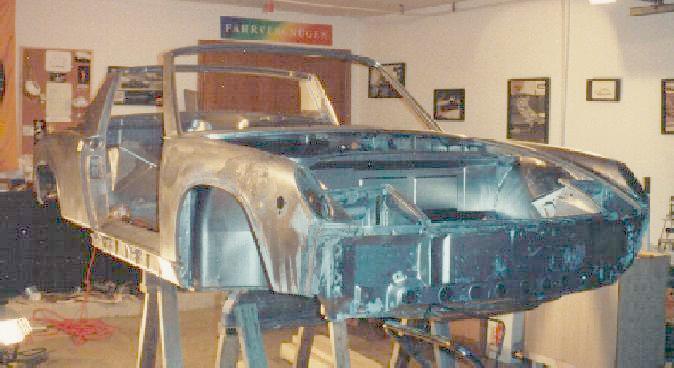
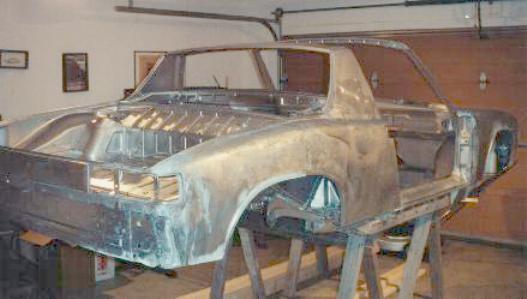
Posted by: Brett W Dec 22 2015, 01:40 PM
There is a place down in Jackson MS, that also does stripping and resotoration. They have a Pyrolytic Cleaning Oven, phosphoric Cathode Dip tank, and they have a deal with the Nissan factory to allow cars to be e-coated in the Nissan E-coat vat.
If you are just cleaning everything off the body, the oven is the way to go. If you are going to be fixing rust and e-coating the whole process is the way to go. You could even put the chassis back in the oven after dipping to burn off any residue that might later cause a problem.
Posted by: Al Meredith Dec 22 2015, 04:33 PM
I once dipped a Formula V frame and years later it separated at the welds between the roll cage and the engine mounting frame. Acid got into the welds through some pin holes
Posted by: John Dec 23 2015, 05:19 PM
What I can tell you is that the owner of the E-coat probably makes DAMN sure that whatever goes into the E-coat tank is CLEAN! The cost of a tank of E-Coat paint large enough to dip the whole tub is nothing to sneeze about. Contaminating said tank of paint would render it worthless.
Typically with an E-Coating process, there would be several stages of pretreatment in order to clean the parts. On a tank this large, it would more than likely be several stages of dip-pretreatment, followed by the e-coat tank, then a post rinse (to rinse off the non coated E-coat paint. Then the E-Coated parts would enter a curing oven that first brings the metal temp up to just below boiling point of water for 10-15 minutes to drive off moisture (dehydration zone), and then the parts would be typically be brought up to a metal temperature of approximately 400deg for around 45-60 minutes. Once cooled, the parts are done.
This process would have the advantage of completely cleaning acid from the joints and effectively coating all surfaces that the E-Coat process can coat (excludes closed box sections that create Faraday Cages).
The E-Coat needs to be top coated as it is not very UV stable. It would make for an excellent primer. The 914's were originally dip primer coated in a similar process back in the 70's. It was the precursor to what we know now as E-Coating. That is the thin grey primer typically found when one strips the tar/sound deadener from the floors of a 914.
We build industrial E-coat and Powder Coat systems where I work.
I think it looks great.
For my $0.02, our track car was chemically stripped back in 1984 when it got it's factory flares. To this day, the tub remains clean. The only paint problems we have had with it were self induced. We experienced no bubbling of paint. That typically comes from poor prepwork.
Posted by: Rob-O Dec 23 2015, 07:31 PM
![]()
Great paint info. I worked in the OEM paint industry for a long, long time, specifically BASF. BASF's aftermarket products were numerous, but most people associated them with Rinshed-Mason.
The e-coat tank is the paint so it doesn't get rinsed after application. It would go from the e-coat tank straight to an oven.
But I do disagree that the 914 was ever dipped by the factory. The inner longs, once separated, show no signs of paint in that area. That area also wouldn't qualify as a Farraday cage area. Besides, If the longs were already welded together, then that means the heater tubes were also already in place. Those heater tubes would not have survived the pre-treatment or any dipping/e-coating process.
Dipping a car now is definitely possible (and this subject comes up every year or so on the World). If it's to be a track car no problem (but im not sure why one would go to that expense for most track cars). But for a car that ever wants to have the capability of producing heat to the cabin again, the heater tubes will need to be pulled before dipping...and that means cutting the outer long to get the tube out.
Posted by: Mark Henry Dec 23 2015, 07:46 PM
Dipping has been debated to death...you will never get a consensus ![]()
Posted by: rick 918-S Dec 23 2015, 08:58 PM
I had this Mercedes done over a year ago. It is sitting in E-coat now. Cost was around 3k. They cook the shell at 800 degrees. To remove the thick rubberized under body coating and the tar boards in the interior and u der the car before the dipping process. This turns the stuff into ash before the acid bath. There is no way I could come close to the end result of this process by hand with any amount of money.
Attached thumbnail(s)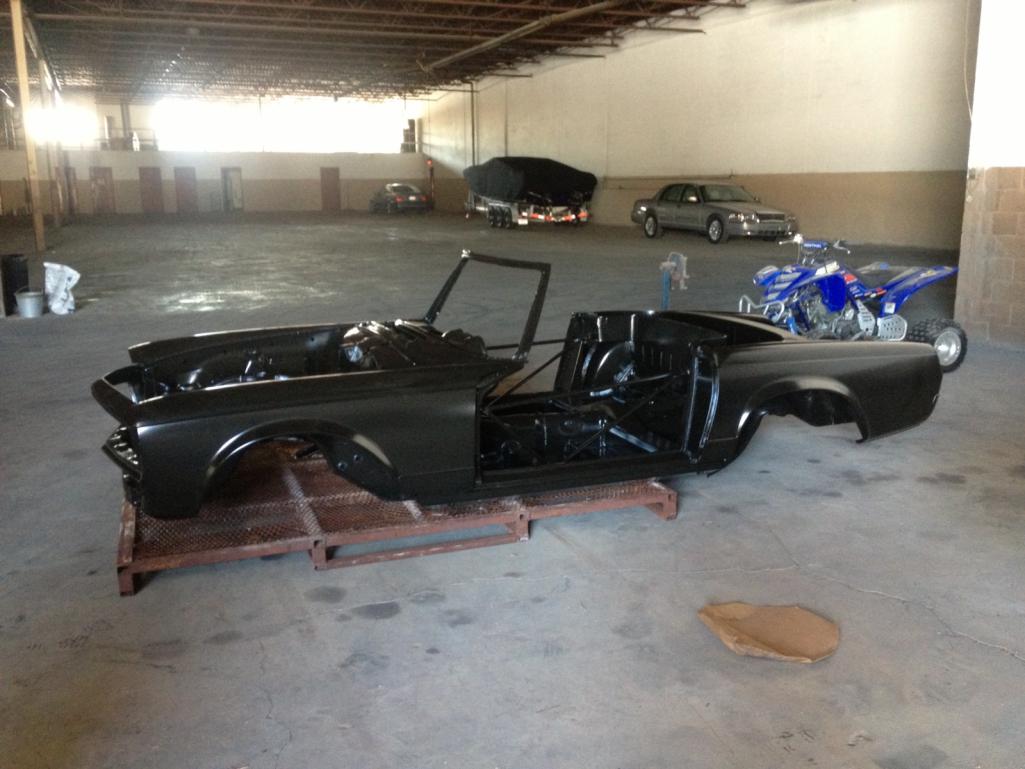
Posted by: mepstein Dec 23 2015, 09:02 PM
The paper heater tubes aren't important on a suby conversion right? It would also get rid of all the foam. ![]()
Posted by: Rob-O Dec 23 2015, 09:24 PM
Nope wouldn't need 'em. And might make it easier to run coolant hoses through the longs!
Posted by: boxsterfan Dec 23 2015, 11:08 PM
there are always electric heaters hooked up to 55 amp alternators!! LOL
Posted by: Brett W Dec 24 2015, 02:43 PM
The 914's were originally dip primer coated in a similar process back in the 70's. It was the precursor to what we know now as E-Coating. That is the thin grey primer typically found when one strips the tar/sound deadener from the floors of a 914.
None of the 914s I have cut apart had primer inside the rocker panels, frame rails, etc. Dipping would mean they couldn't put that weird paper muffler inside the rockers. if they had dipped them we wouldn't be dealing with so much rust.
For a track car with the budget, I would absolutely dip it or bake it in an oven to get all the crap out of the chassis. That is a the best way to clean up the seams and all the points where you need to weld.
Posted by: skier2.0 Dec 25 2015, 06:06 PM
I bet the new methods are much different than the old Dip&Strip places you took your wife's kitchen chairs to.
Posted by: Dominic Dec 25 2015, 11:11 PM
Does anyone have any recommendations for a reputable acid dipping company in Nor Cal?
Posted by: DavidSweden Dec 26 2015, 03:41 AM
Elbow grease
http://s1300.photobucket.com/user/DavidGbgSweden/media/912%20paint/340_zpsbwgwkpru.jpg.html
Posted by: John Dec 28 2015, 04:24 PM
Great paint info. I worked in the OEM paint industry for a long, long time, specifically BASF. BASF's aftermarket products were numerous, but most people associated them with Rinshed-Mason.
The e-coat tank is the paint so it doesn't get rinsed after application. It would go from the e-coat tank straight to an oven.
But I do disagree that the 914 was ever dipped by the factory. The inner longs, once separated, show no signs of paint in that area. That area also wouldn't qualify as a Farraday cage area. Besides, If the longs were already welded together, then that means the heater tubes were also already in place. Those heater tubes would not have survived the pre-treatment or any dipping/e-coating process.
Dipping a car now is definitely possible (and this subject comes up every year or so on the World). If it's to be a track car no problem (but im not sure why one would go to that expense for most track cars). But for a car that ever wants to have the capability of producing heat to the cabin again, the heater tubes will need to be pulled before dipping...and that means cutting the outer long to get the tube out.
Begging your pardon, but:
Every E-Coat system that I have seen/worked on has a post rinse directly after the paint tank to rinse any residual paint off the surface of the painted part. If that step is skipped, the coating is not nearly uniform enough. The Electrocoating process basically plates the paint to the metal surface. The post rinse is to get rid of any paint that was not electro-deposited onto the substrate.

The electro-deposition paint process is basically a line of sight between the anodes and the part being painted. While the inner portions of some tubes may get coated, it will not coat too far into the faraday cage.
Similar effects occur in other forms of electro-deposition painting processes.
I believe that if a process was autoferretic, no voltage passes through the paint and the inside of tubing can be painted, but without voltage, it is not E-Coat.
We have done automotive lines, truck lines, railroad car lines, Agricultural equipment lines, etc, etc.....
(I too don't have an answer concerning the paper heater tubes, but that is what I have read and recall from way, way back.)
Posted by: John Dec 28 2015, 04:38 PM
The 914's were originally dip primer coated in a similar process back in the 70's. It was the precursor to what we know now as E-Coating. That is the thin grey primer typically found when one strips the tar/sound deadener from the floors of a 914.
None of the 914s I have cut apart had primer inside the rocker panels, frame rails, etc. Dipping would mean they couldn't put that weird paper muffler inside the rockers. if they had dipped them we wouldn't be dealing with so much rust.
For a track car with the budget, I would absolutely dip it or bake it in an oven to get all the crap out of the chassis. That is a the best way to clean up the seams and all the points where you need to weld.
Section views have been posted before (here and other places) that show evidence of paint inside semi-closed cavities. Here are a few examples. The grey is indeed paint. The red is indeed rust.
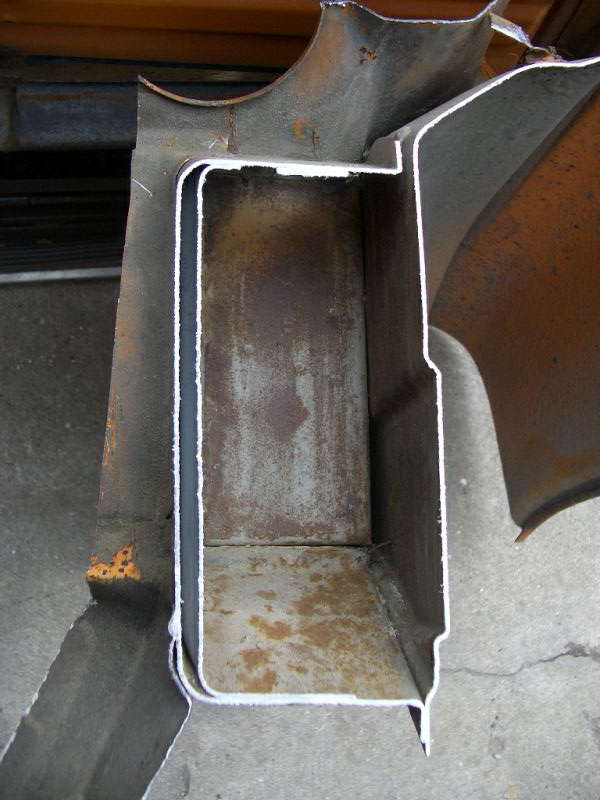
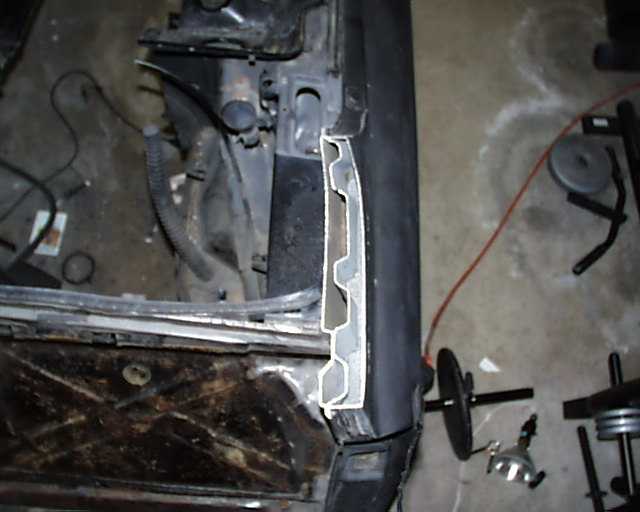
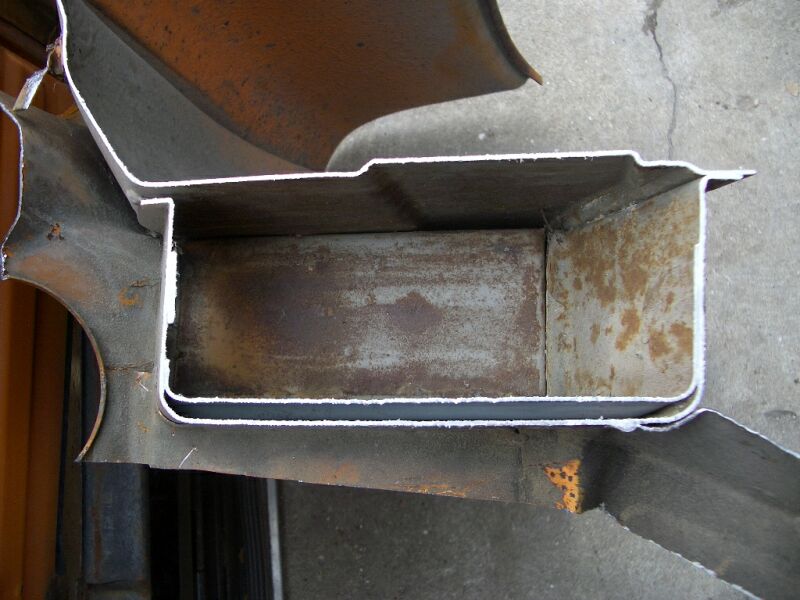
It was not thick paint, but it was some sort of paint, and it has been found inside cavities that would not be sprayable.
Posted by: mepstein Dec 28 2015, 05:15 PM
The 914's were originally dip primer coated in a similar process back in the 70's. It was the precursor to what we know now as E-Coating. That is the thin grey primer typically found when one strips the tar/sound deadener from the floors of a 914.
None of the 914s I have cut apart had primer inside the rocker panels, frame rails, etc. Dipping would mean they couldn't put that weird paper muffler inside the rockers. if they had dipped them we wouldn't be dealing with so much rust.
For a track car with the budget, I would absolutely dip it or bake it in an oven to get all the crap out of the chassis. That is a the best way to clean up the seams and all the points where you need to weld.
Section views have been posted before (here and other places) that show evidence of paint inside semi-closed cavities. Here are a few examples. The grey is indeed paint. The red is indeed rust.



It was not thick paint, but it was some sort of paint, and it has been found inside cavities that would not be sprayable.
Maybe the original surface treatment of the metal before it was welded?
Posted by: McMark Dec 29 2015, 12:59 PM
All the cars were indeed primer dipped. No doubt about it. The longs may have been closed up after the dipping, but they were all dipped.
Posted by: Perry Kiehl Sep 22 2017, 12:21 PM
I seem to remember reading in a Porsche sales brochure or pamphlet "phosphate coated"
Posted by: Jeff Bowlsby Sep 22 2017, 01:50 PM
See these two:
Attached image(s)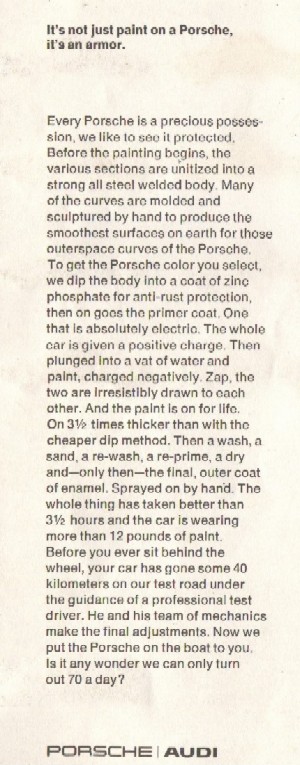
Attached File(s) zRareDoc31A.pdf ( 191.64k )
Number of downloads: 23
zRareDoc31A.pdf ( 191.64k )
Number of downloads: 23
Posted by: Rob-O Sep 22 2017, 04:15 PM
See these two:
Jeff,
Is that for all models? I know the -6 was assembled by Porsche, and the -4 was assembled by Karmann. I thought Karmann painted them all though. How about the 911? I thought that was all Porsche. If so those processes between the two factories could've been wildly different. Hard to know what context the above information came from without some other identifying information.
Do we know if 911's were dipped?
With all the knowledge we have, I'm actually surprised we don't know or have contacts of people who worked in the factories back in the day.
Powered by Invision Power Board (http://www.invisionboard.com)
© Invision Power Services (http://www.invisionpower.com)
